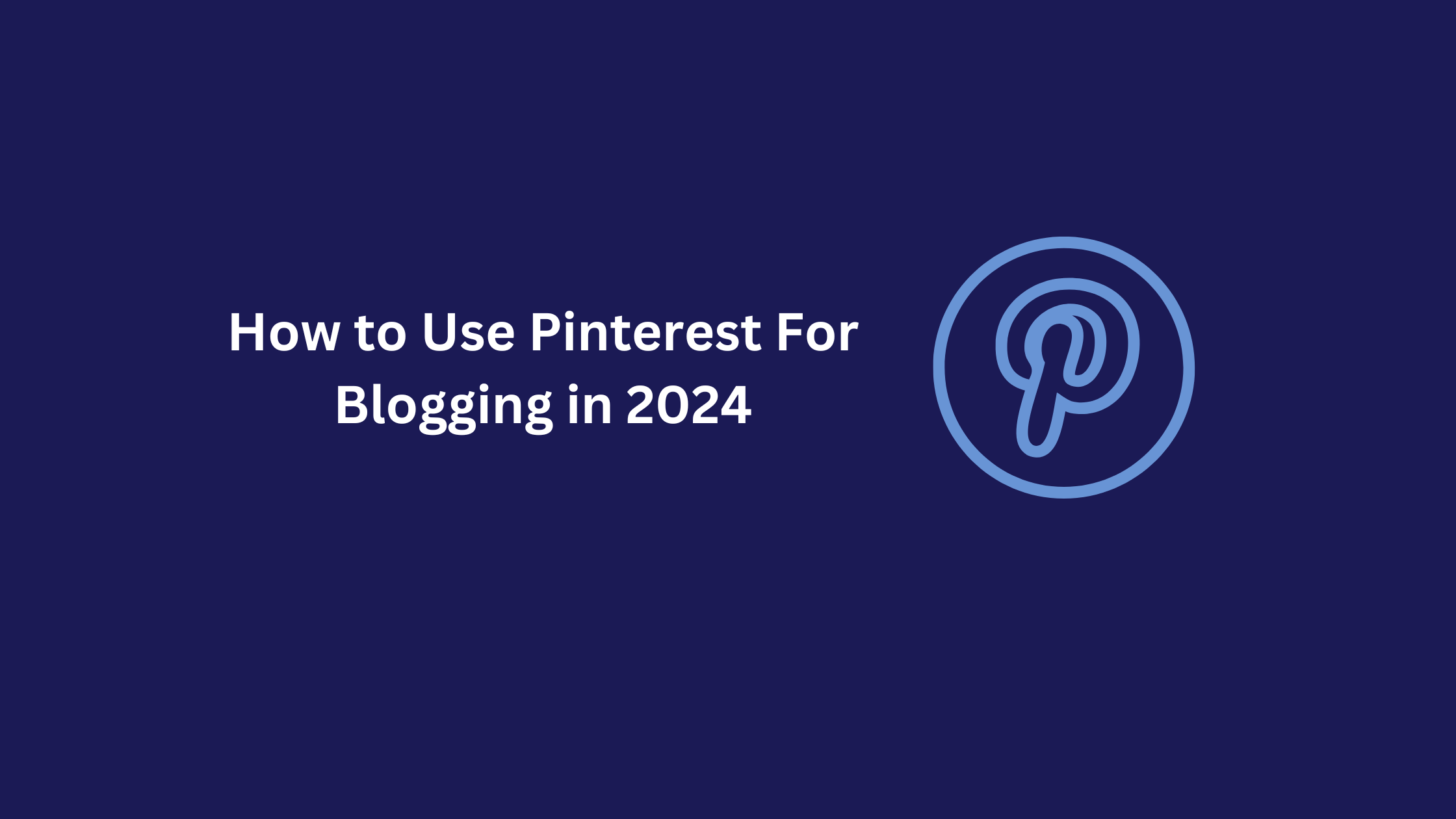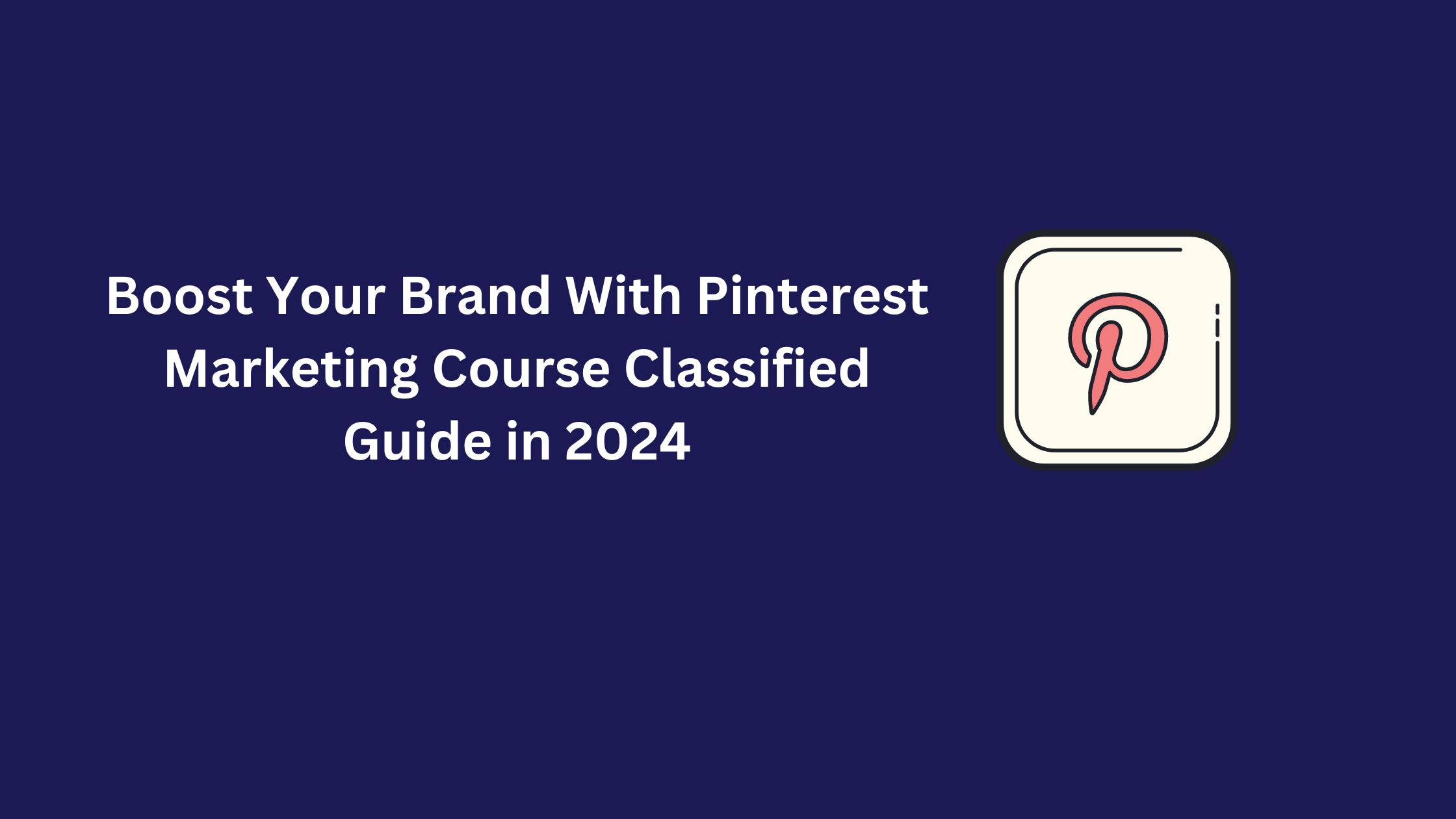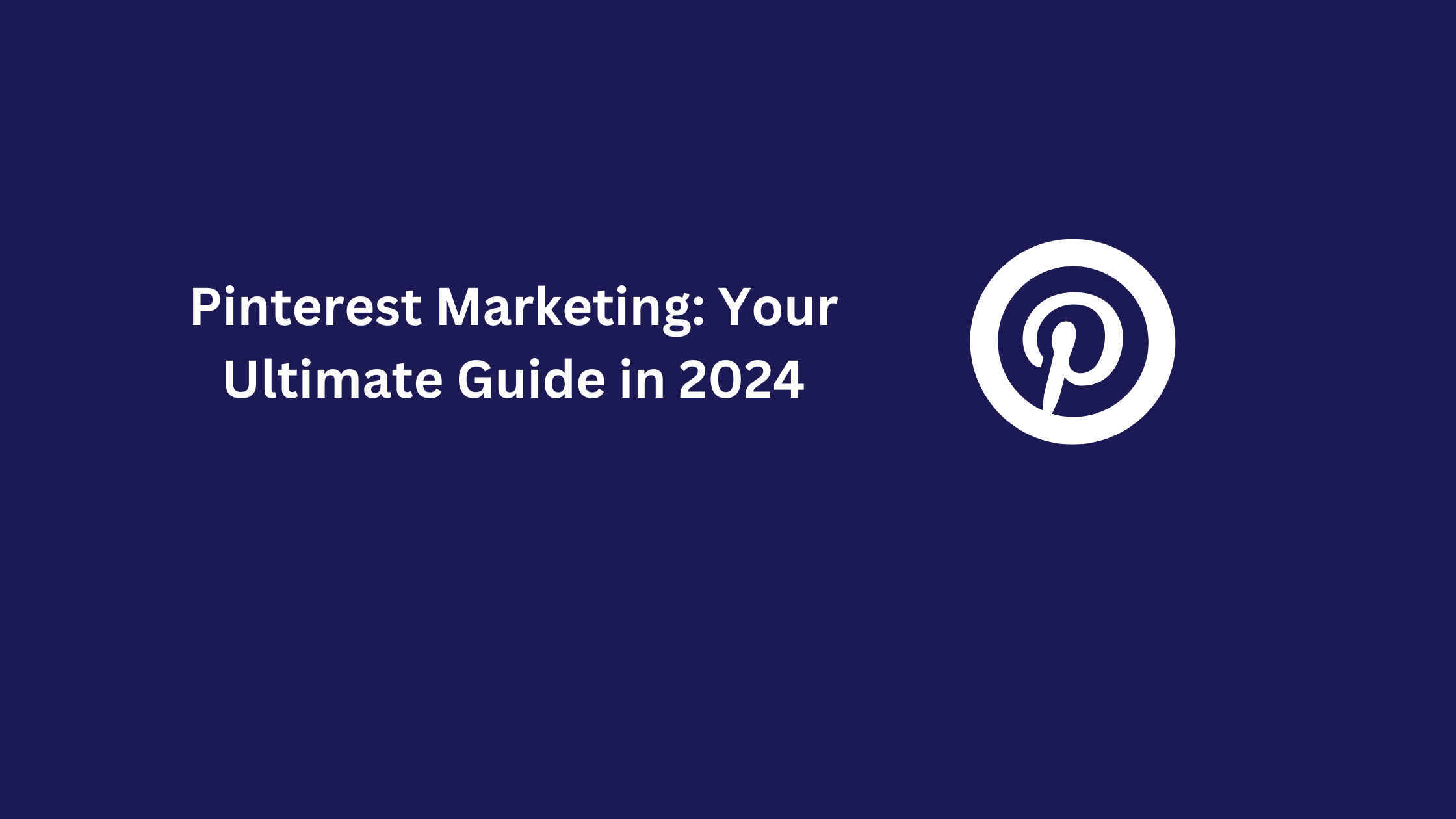A platform for inspiration and a robust tool for bloggers aiming to increase their reach and traffic. Understanding how to leverage Pinterest for blogging can be transformative,
offering a unique approach to promotion through its search engine-like capabilities.
In this guide, we’ll explore how to craft a Pinterest strategy that aligns with your blog’s brand, engages your target audience,
and maximizes your blog’s visibility and traffic.
Key Takeaways Of Pinterest For Blogging
- Pinterest is a visual search engine which is ideal for bloggers to promote content and increase blog traffic through strategic pinning.
- Creating engaging and visually appealing pins that reflect your blog’s branding can significantly boost recognition and shares.
- Optimizing pins for Pinterest SEO using relevant keywords can help your target audience discover your blog more easily.
- Utilizing advanced features like Rich Pins and Pinterest ads can enhance visibility and attract more traffic to your blog.
- Regularly evaluating your Pinterest strategy and adapting to algorithm changes is crucial for sustained growth and engagement.
Understanding Pinterest’s Role in Blogging
The Search Engine Advantage
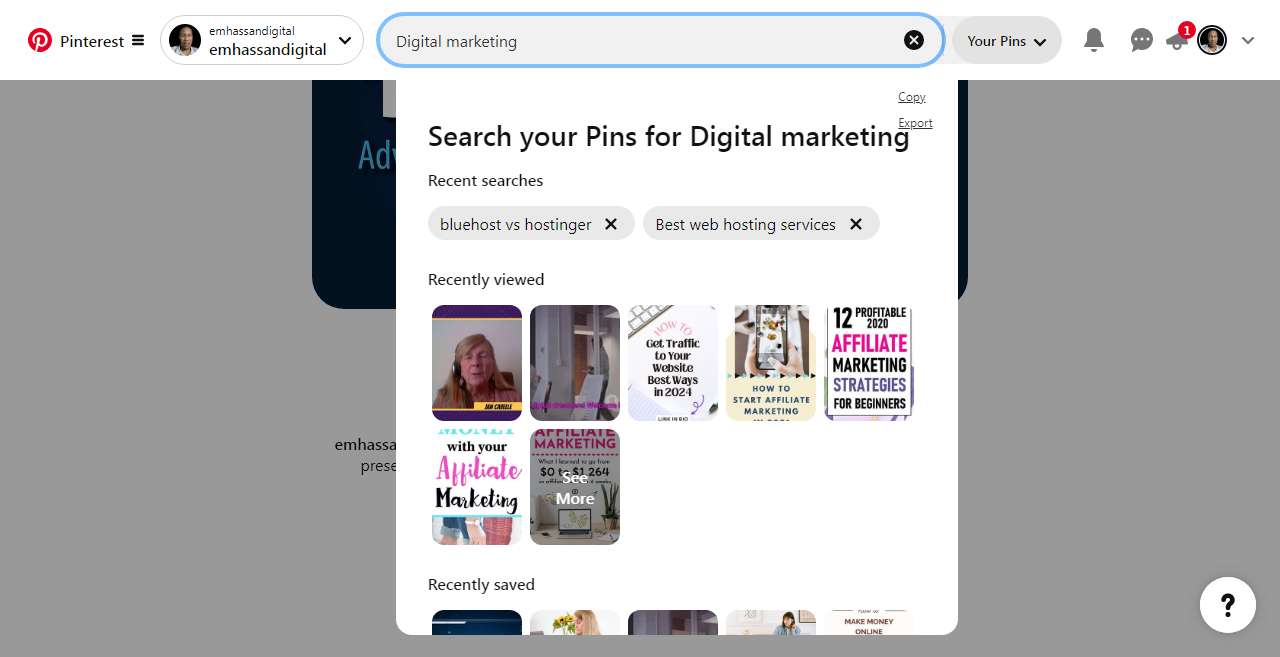
Pinterest stands out as a unique blend of a social network and a search engine, where visuals take the forefront.
Unlike traditional search engines that rely heavily on text-based queries,
Pinterest allows users to discover content through images, which can be a game-changer for bloggers.
By optimizing your blog’s content for Pinterest, you can tap into a visual search engine that caters to millions of users looking for inspiration and ideas.
When users search on Pinterest,
they’re presented with a grid of pins that match their interests. These pins, when clicked, can lead directly to your blog, effectively driving traffic and increasing your blog’s visibility.
Crafting pins that stand out and convey your blog’s message is crucial in capturing the attention of potential readers.
By aligning your blog’s content with the visual nature of Pinterest, you not only enhance its discoverability but also ensure that it resonates with an audience that values creativity and aesthetics.
To maximize the search engine advantage of Pinterest, consider the following points:
- Ensure your pins are visually appealing and reflect your blog’s theme.
- Use keywords in your pin descriptions to improve searchability.
- Regularly update your Pinterest boards with fresh content from your blog.
- Analyze what types of pins and topics are trending to stay relevant.
Pinterest Pins as Blog Promotions
Pinterest serves as a powerful platform for promoting your blog content.
Your pins act as visual advertisements, drawing users to your blog with compelling images and enticing titles.
To effectively use Pinterest for blog promotions, consider the following steps:
- Create multiple pins for each blog post to test which designs and titles resonate best with your audience.
- Pin your own content regularly to keep your blog in front of your audience, and don’t forget to pin it immediately after publishing a new post.
- Save your pins to the most relevant board first, then share them with additional relevant boards at intervals to maximize exposure.
- Utilize Pinterest Analytics to boost your performance by understanding what works and what doesn’t.
By creating a visual that speaks to the desired outcome, you entice Pinterest users to click and discover more about your blog. This approach not only increases traffic but also enhances user engagement with your content.
Remember to maintain consistent branding across your pins and boards for instant recognition, and schedule pins in advance to ensure regular activity.
With these practices, Pinterest can become a significant source of traffic and engagement for your blog.
Aligning Your Blog’s Brand with Pinterest
To effectively align your blog’s brand with Pinterest,
start by ensuring that your pins and boards reflect your blog’s branding for immediate recognition.
This includes using consistent colours, fonts, and logos across all your Pinterest content.
Consistency in your visual branding and pinning schedule can significantly boost your blog’s presence on the platform.
Here are some steps to align your brand with Pinterest:
- Complete your profile with a professional picture, a compelling bio, and a link to your blog.
- Use engaging titles and descriptions that encourage users to click through to your blog.
- Incorporate your logo or blog name subtly on your pins to reinforce brand recognition.
- Optimize your blog posts to be Pinterest-friendly, focusing on vertical images with a 2:3 aspect ratio for best performance.
By crafting a Pinterest presence that mirrors the branding of your blog, you create a cohesive and recognizable image that resonates with your audience and fosters loyalty.
Developing a Pinterest Strategy for Your Blog

Identifying Your Target Audience
To effectively use Pinterest for blogging,
identifying your target audience is crucial. This involves understanding who will most likely engage with your content and their interests.
Start by analyzing the demographics that matter to marketers, such as age groups, gender distribution, and regional trends.
For instance, a report titled 10 Pinterest Demographics That Matter to Marketers in 2024 highlights the importance of tailoring your strategy to the platform’s user base.
Once you’ve pinpointed your audience, consider their pain points and desires. What are they searching for on Pinterest? What solutions can your blog provide?
Use power words in your pins’ descriptions to address their needs directly—words like ‘quick,’ ‘easy,’ ‘simple,’ and ‘fast’ can be particularly effective.
Crafting a compelling call-to-action (CTA) is also essential. Place it prominently in your pin description to grab attention and encourage clicks. Remember, the goal is to solve the audience’s pain points and answer their questions through your content.
Finally, patience and consistency are key.
Stick with your efforts and continue to share content that resonates with your niche.
Over time, this will attract a dedicated following and positively influence the Pinterest algorithm in your favour.
Crafting Engaging and Shareable Pins
To excel on Pinterest, creating engaging and shareable pins is crucial.
Your pins are the gateway to your blog, so they must be visually appealing and resonate with your audience.
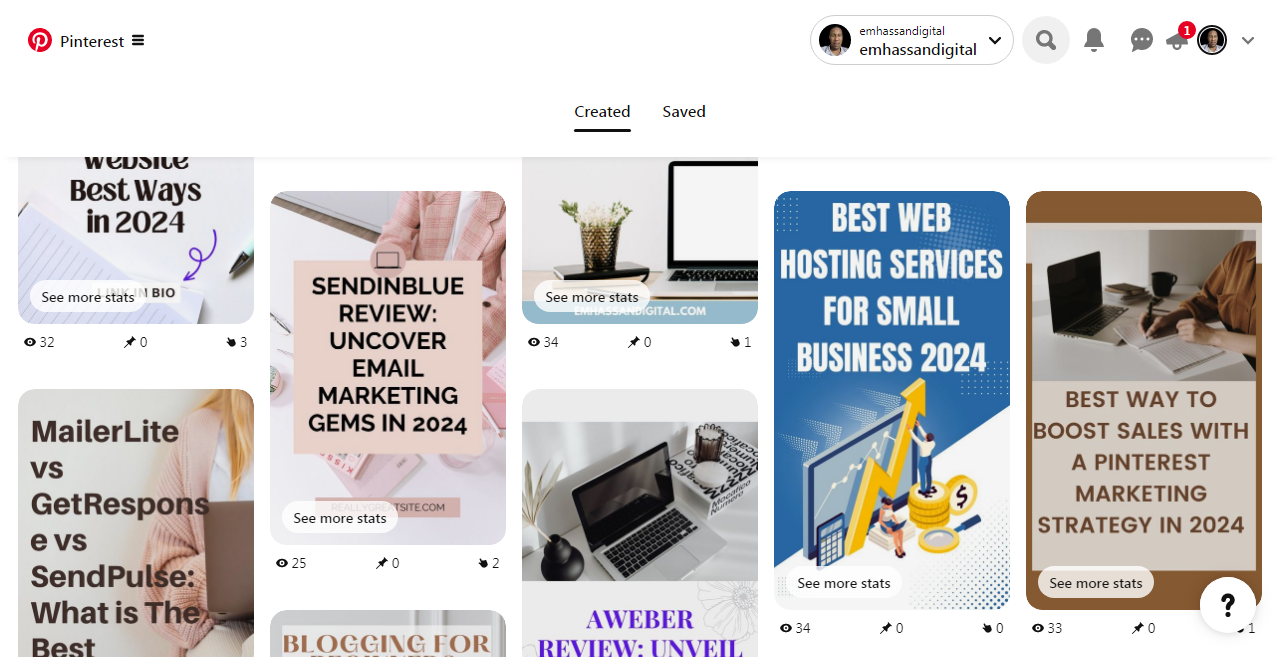
Start using eye-catching imagery; bright, clear images with readable text overlays can make a significant difference.
Idea pins are particularly effective for sharing step-by-step guides or multiple pieces of content in a single pin.
When designing pins, creating curiosity without resorting to clickbait is essential. A catchy headline can pique interest and increase the likelihood of clicks.
Ensure your pin titles and descriptions are intriguing and relevant to the content they link to. Here’s a simple approach to crafting your pins:
- Use a pin template for consistency and speed.
- Design pins that are ready to be shared, with titles and descriptions.
- Include a call to action, inviting users to click through to your blog.
Consistent pinning is key to maintaining visibility on Pinterest. Aim to pin something every day, whether it’s a new pin or repinning existing content. This shows Pinterest that you’re actively engaging with the platform.
Lastly, recognize which pin designs, descriptions,
or board themes generate the most engagement and model future content accordingly. Adjust your posting schedule to ensure your content reaches the widest audience possible.
Optimizing for Pinterest SEO
To harness the full potential of Pinterest for driving blog traffic, optimizing for Pinterest SEO is crucial.
Start by incorporating relevant keywords into your pin descriptions and board titles. This aligns your content with the queries of your target audience, making it more discoverable.
Here’s a streamlined approach to Pinterest SEO:
- Find and use relevant Pinterest keywords.
- Focus on long-tail keywords for more specific targeting.
- Utilize Pinterest Ads to uncover additional keywords.
- Regularly track keyword performance.
- Keep your Pinterest profile updated with SEO in mind.
- Create and SEO your Pinterest boards and their sections.
- Ensure your pin titles and descriptions are keyword-optimized.
- Optimize images and text overlays for visual search.
- Embed the
data-pin-descriptiontag in your blog’s pinnable images. - Optimize your product photo pins for better reach.
By methodically applying these steps, you can significantly improve the visibility of your pins. Remember, the goal is to make your content easily searchable and appealing to your audience, which in turn can lead to increased blog traffic.
It’s also important to keep your strategy dynamic.
As Pinterest evolves, so should your SEO tactics. Regularly update your approach based on the latest best practices and the performance data of your pins.
Maximizing Blog Traffic Through Pinterest

Creating a Pinnable Blog Content Plan
Developing a content plan encouraging pinning is crucial to harnessing Pinterest’s full potential to drive blog traffic.
Embed at least one pinnable image in each blog post to facilitate easy sharing by visitors.
These images should be high-quality and relevant and include a descriptive title and link to your post.
When a visitor pins your image, the ‘data-pin-description’ tag ensures Pinterest captures the right description, enhancing the pin’s effectiveness.
Creating a pinning schedule is also essential. Consistency keeps your boards fresh and your audience engaged. Here’s a simple plan to get started:
- Pin your own content immediately after publishing
- Create multiple pins for each post to maximize reach
- Save new pins to the most relevant board first
- Space out pinning to other relevant boards to maintain interest
Lastly, don’t forget to use keywords in your pins, boards,
And profile to improve discoverability. Engaging with others by commenting and repinning helps build relationships and visibility on the platform.
Leveraging Pinterest Analytics
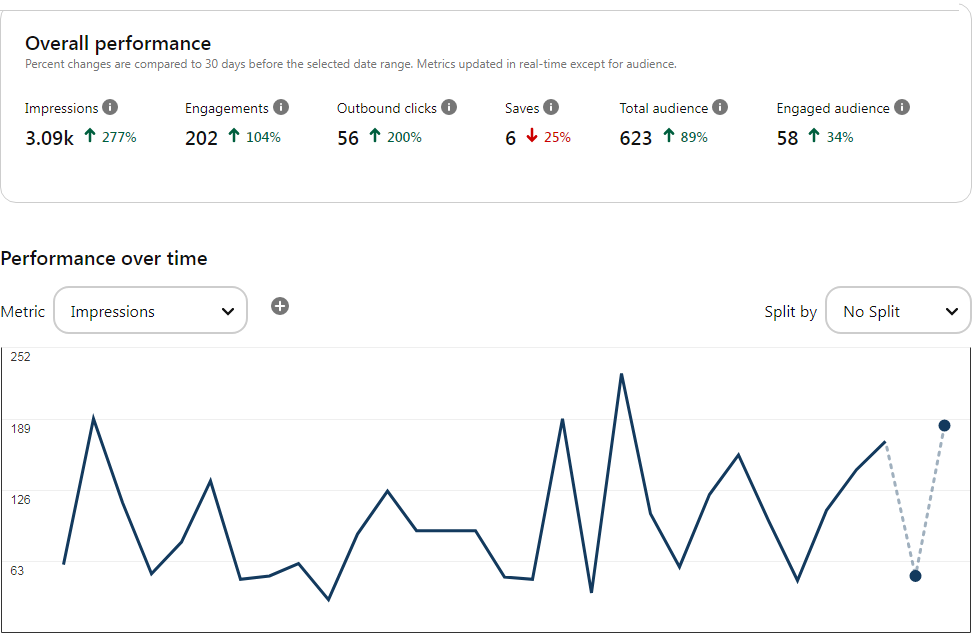
Engaging with Pinterest Analytics is crucial to elevate your blog’s presence on Pinterest.
By diving into the analytics, you can uncover a wealth of information to guide your content strategy.
Access a comprehensive dashboard by navigating to Analytics > Overview in your Pinterest account.
Here’s a simple breakdown of what to look for:
- Impressions: How often are your pins seen? This indicates your content’s reach.
- Engagements: The number of saves, clicks, and comments. This reflects how your audience interacts with your pins.
- Clicks: Specifically tracks the traffic driven to your blog. This is a direct measure of your Pinterest success.
By consistently analyzing these metrics, you can identify trends, understand what content resonates with your audience, and adjust your strategy accordingly.
Remember, the goal is to use these insights to refine your approach,
focusing on creating pins that look great and perform well.
Regularly check your analytics to monitor the performance of your pins and make data-driven decisions to boost your blog’s traffic.
Engaging with the Pinterest Community
Engaging with the Pinterest community is a dynamic way to boost engagement and increase your blog’s visibility.
By actively participating in the community, you can connect with users who are genuinely interested in your content.
Pinterest users are not just passive scrollers; they are keen on sharing and discovering new ideas, making it an ideal platform for bloggers to interact and grow their audience.
To effectively engage with the community, consider these steps:
- Comment on and repin other users’ content to build relationships.
- Use promoted pins to reach a wider audience and drive traffic to your blog.
- Regularly track your performance with Pinterest analytics to understand what resonates with your audience.
By consistently pinning and interacting with other pins, you can create a ripple effect that amplifies your blog’s reach. Remember, it’s not just about pinning your content, but also about being an active member of the community.
Lastly, don’t underestimate the power of Rich Pins.
These enhanced pins provide additional information and are more likely to engage users, increasing outbound clicks to your blog.
Advanced Pinterest Techniques for Bloggers

Utilizing Rich Pins for Enhanced Visibility
Rich Pins are a game-changer for bloggers looking to amplify their presence on Pinterest.
Rich Pins makes your content more informative and engaging by providing more detailed information directly on the pin.
This enhanced format includes elements such as the headline, author, and a rich description, which can significantly increase your content’s visibility and click-through rates.
You must add specific metadata to your blog posts to implement Rich Pins. Once you’ve updated your site with the necessary tags,
use Pinterest’s Rich Pin Validator to check your work. After validation, apply to Pinterest to enable Rich Pins for your account.
It’s a straightforward process that can substantially benefit your blog’s traffic.
Rich Pins ensure that any updates to your blog post are automatically reflected on Pinterest, keeping your pins fresh and relevant. This dynamic feature is particularly useful for maintaining accurate information without the need for manual updates.
Exploring Pinterest Ads for Blog Promotion
Pinterest ads offer a cost-effective way to amplify your blog’s reach and attract more visitors. By creating targeted ad campaigns,
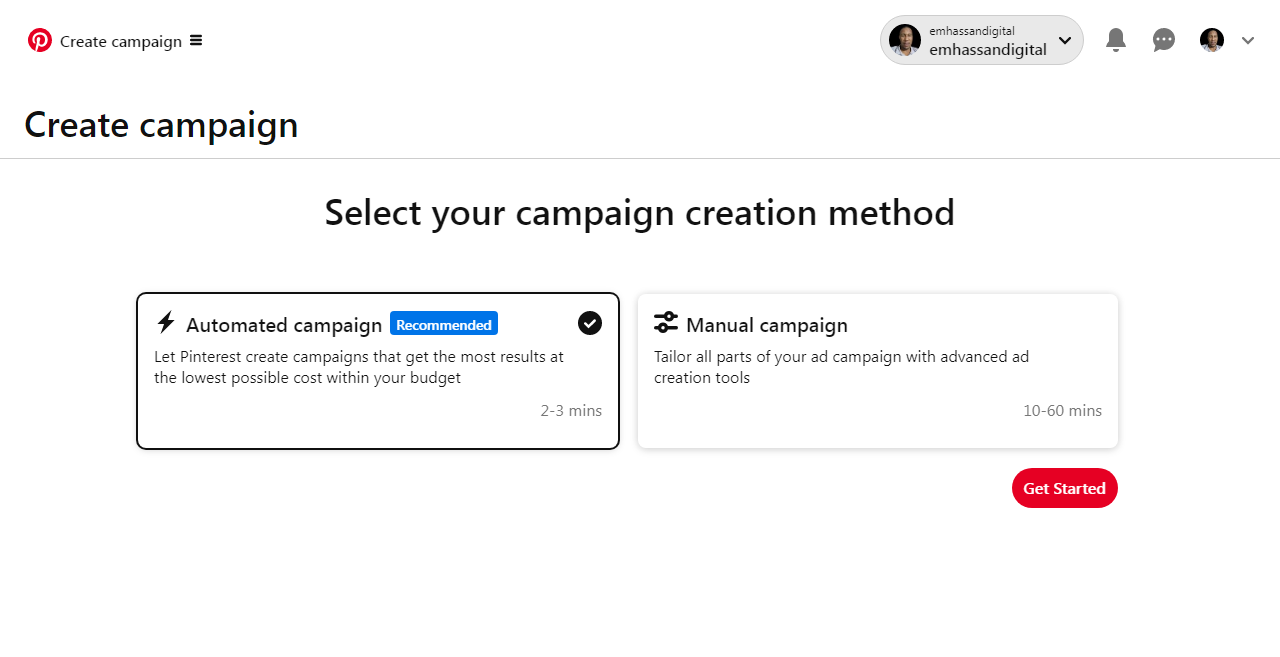
you can showcase your blog content to a hyper-specific audience interested in your niche. Start by choosing the right campaign goal:
Brand awareness, website traffic, or conversions.
- Use Promoted Pins to increase visibility.
- Analyze ad performance with Pinterest’s analytics.
- Experiment with ad titles, designs, and formats to find what resonates with your audience.
Crafting a visual that speaks to the desired outcome of your audience is crucial. It sets the expectation for what users will discover when they click on your pin.
Remember to focus on creating fresh pins and avoid spamming;
Pinterest recommends not exceeding 25 pins per day. Space out your pins to maintain engagement without overwhelming your followers.
Collaborating with Influencers and Brands
Collaborating with influencers and brands on Pinterest can significantly amplify your blog’s reach.
Influencers have established audiences and can introduce your content to new demographics. When selecting influencers,
consider their niche alignment with your blog and the engagement levels of their followers.
- Identify influencers who resonate with your blog’s theme.
- Reach out with a personalized proposal.
- Co-create content that benefits both parties.
- Share each other’s pins to maximize exposure.
Establishing a partnership with a brand can lead to sponsored pins or boards, which can further boost your blog’s visibility. It’s essential to maintain authenticity and transparency with your audience when entering such collaborations.
Evaluating and Refining Your Pinterest Blogging Strategy

Tracking Progress with Pinterest Metrics
To effectively gauge the success of your Pinterest strategy,
Monitoring key performance indicators (KPIs) through Pinterest Analytics is essential.
This data-driven approach lets you understand how your content resonates with your audience and informs decisions for future content creation.
Here are some of the core metrics to track:
- Impressions: How often do your pins appear on Pinterest?
- Saves: The frequency with which users save your pins.
- Clicks: The tally of clicks your pins garner.
- Engagement rate: The ratio of interactions to impressions.
These metrics can be accessed via the analytics dashboard, providing a snapshot of your recent performance.
Consistent tracking helps identify trends and areas for improvement, ensuring your Pinterest presence remains engaging and interactive.
By focusing on creating a professional profile, designing attractive pins, and maintaining daily activity, you can boost your outbound clicks and overall Pinterest performance over time.
Adapting to Pinterest Algorithm Changes
The Pinterest algorithm is an ever-evolving landscape; staying ahead means being adaptable and informed.
Understanding the algorithm’s ranking factors is crucial for ensuring your content remains visible and engaging.
Pinterest’s search algorithm prioritizes fresh content, relevance to search queries, and user engagement.
To maintain your blog’s presence on Pinterest, it’s essential to analyze your pin performance using Pinterest Analytics regularly.
This tool provides insights into what content resonates with your audience, allowing you to adjust your strategy accordingly.
For instance, if certain pins are gaining more traction, it might be beneficial to create similar content.
Consistency in updating your boards with new pins is vital for growth. Quality should always trump quantity, as high-value content is more likely to engage and retain your audience.
Remember, the goal is to work with the algorithm, not against it.
By staying informed about changes and adapting your content strategy, you can continue to leverage Pinterest effectively for your blog.
Continuous Learning and Improvement
In the dynamic landscape of Pinterest and blogging,
continuous learning and improvement are essential for maintaining and growing your blog’s presence. As Pinterest evolves, so should your strategies.
Regularly reviewing the latest Pinterest guides, such as the Pinterest Strategy Guide:
How to Grow Your Blog Traffic (2024) can provide fresh insights and techniques to apply to your blog.
Embrace the iterative process of testing new ideas, analyzing the results, and refining your approach. This cycle of improvement will help you stay ahead of the curve and keep your content relevant and engaging.
To stay informed and adaptable, consider these steps:
- Subscribe to industry newsletters and blogs.
- Participate in webinars and online courses.
- Network with other bloggers and Pinterest experts.
- Experiment with new features and tools as they become available.
Conclusion
In conclusion, Pinterest is an invaluable asset for bloggers aiming to expand their audience and drive more site traffic.
You can leverage Pinterest’s unique appeal as a visual search engine by treating your pins as advertisements, completing your profile with a clear bio and blog link, and crafting a strategic approach tailored to your audience.
Remember, consistency in branding and content and a willingness to adapt to new trends are key to success on this platform.
Bookmark this guide and refer to it as you refine your Pinterest strategy and watch your blog traffic flourish in 2024 and beyond. Happy pinning!
Frequently Asked Questions
What makes Pinterest beneficial for bloggers?
Pinterest is unique because it is a search engine where users actively search for ideas, inspiration, and solutions. Bloggers can significantly increase their blog traffic by using the keywords for Pinterest SEO.
How do Pinterest pins serve as blog promotions?
Pins on Pinterest act like advertisements for your blog content. By creating visually appealing video pins, you can attract Pinterest users to visit your blog and engage with your content.
Can Pinterest influence my blog’s brand alignment?
Yes, consistent branding on Pinterest through pins and boards that reflect your blog’s branding can lead to instant recognition and a cohesive brand image across platforms.
What are some strategies to optimize my blog for Pinterest SEO?
To optimize for Pinterest SEO, identify and use keywords your audience is searching for, create engaging and shareable pins, and maintain a consistent posting schedule to increase visibility.
How can I track the success of my Pinterest strategy for blogging?
Track progress using Pinterest analytics to understand your audience’s behaviour, measure engagement, and refine your strategy based on collected data.
What advanced techniques can bloggers use on Pinterest for better visibility?
Bloggers can utilize advanced techniques such as Rich Pins for enhanced information on pins, explore Pinterest ads for targeted blog promotion, and collaborate with influencers and brands for wider reach.
